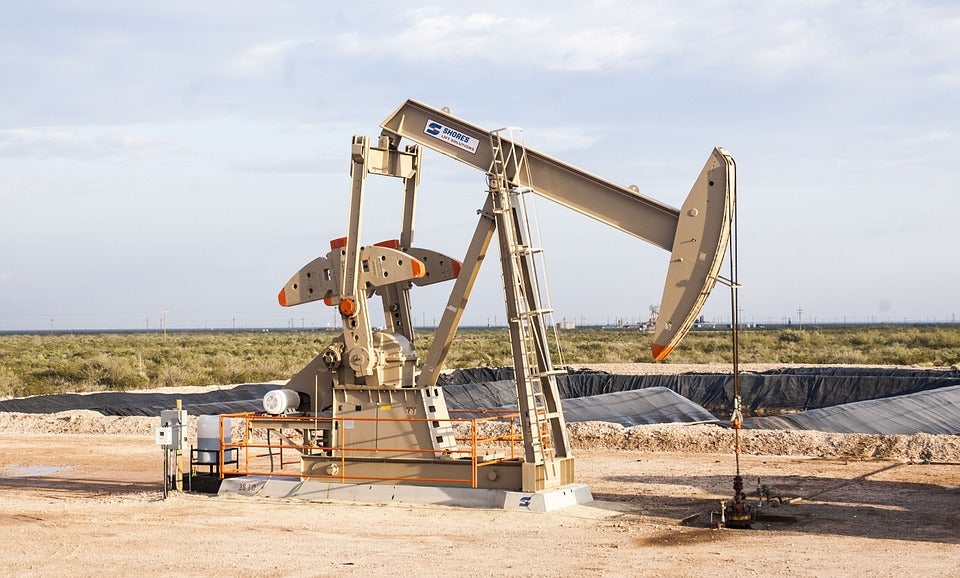New Mexico legislation marks new focus on improved oil and gas oversight under Gov. Lujan Grisham
 By Jon Goldstein and Nichole Saunders
By Jon Goldstein and Nichole Saunders
When New Mexico legislators adjourned last Saturday, they had a long list of accomplishments for the first session under Gov. Lujan Grisham’s executive leadership. Near the top of that list is a bill that, once signed, will mark the first major legislative reform for the state’s oil and gas industry in over a decade.
House Bill 546 has significant implications for how the state oversees its large and growing oil and gas industry. This includes restoring crucial powers to the state’s main oil and gas regulator and enabling it to protect the state’s air and water resources from oil and gas pollution, as well as clarifying how New Mexico manages the massive volume of oilfield wastewater, or “produced water,” generated by operators. These reforms, championed by Sen. Richard Martinez, Rep. Nathan Small and Rep. Matthew McQueen will begin to deliver oil and gas policy that New Mexicans can be proud of.
Improved oversight for violations
HB 546 restores the Energy, Minerals and Natural Resources Department (EMNRD) Oil Conservation Division’s (OCD) authority to enforce the state’s oil and gas protections. OCD lost its ability to meaningfully address oil and gas violations due to a 2009 New Mexico Supreme Court ruling, and has since been forced to rely on the New Mexico Attorney General’s office to accomplish basic enforcement tasks such as assessing fines.
This lack of basic enforcement authority has been a troubling problem with real world consequences. A recent report found that oil and gas-related spills and violations increased nearly 100 percent over the decade since the ruling, while fines assessed by the agency dropped to zero last year.
HB 546 closes a major loophole and restores real teeth to New Mexico’s oil and gas regulator. Its passage is a testament to the efforts of Gov. Lujan Grisham and EMNRD Secretary Sarah Cottrell Propst to catalyze the negotiations around these reforms and create a bill that all sides – industry and environmentalists, as well as Democrats and Republicans – supported.
EDF would have preferred this bill follow the example of the other agencies in New Mexico, as well as in neighboring Texas and Colorado, by not including an administrative cap on penalties — but restoring New Mexico’s ability to protect its health and resources from oil and gas pollution is a critical accomplishment.
New Mexico legislation marks new focus on improved oil and gas oversight under Gov. Lujan Grisham Share on XA careful approach to produced water reuse
House Bill 546, also tackles a number of issues associated with oilfield wastewater. New Mexico and the U.S. EPA are actively looking at ways to reuse this water, and the bill improves how this process is managed in New Mexico as it evolves in the future.
The bill is designed to promote the recycling of produced water within the oilfield so that oil and gas companies will use less fresh water for their operations. The oil and gas industry needs to break their addiction to fresh water and this bill will help them do that.
But the dialogue in New Mexico on produced water hasn’t only been about reuse for drilling or hydraulic fracturing. That’s why it’s significant that this bill also clarifies that the New Mexico Environment Department (NMED) is the agency with decision-making power if produced water leaves the oilfield. This makes good sense. If New Mexico policymakers are determined to find new ways to use this waste stream, like the scenarios envisioned in their draft white paper (surface water discharges, use in agriculture, road application, aquifer recharge, etc.) the logical entity to help define the needed science and any eventual regulatory programs is the state’s environmental agency.
Clarifying jurisdiction, however, doesn’t mean New Mexico is ready to actually implement these practices. The chemical character and toxicity of produced water isn’t fully understood, and more targeted research needs to be done to determine whether it’s smart to pursue certain reuse alternatives and, if so, how to do so safely.
A key question for NMED will be determining “how clean is clean?” for treated produced water in order to protect our health and our environment. Answering that question will likely demand advanced risk analysis and new or modified standards like those that protect water quality, soil and health. These types of assessments are the normal purview of NMED, and with this bill, NMED would be the agency holding the reigns to make the final call on produced water reuse outside of oil and gas development.
If New Mexico intends to support these uses in the future, it must get both the law and the science right. The state needs to move slowly and carefully. There is a lot of work to be done – particularly in researching risks and identifying risk management options. HB 546 ensures that the agency with the right set of skills and expertise will help oversee that work.
Getting the rules right to protect New Mexicans
As the drilling boom in southeastern New Mexico’s Permian Basin attests, oil and gas is a big business in New Mexico. The state has now grown to become the number three oil producer in the U.S., but historically the state has not had the benefit of nation-leading regulations to match its top-flight resources.
That is changing under Gov. Lujan Grisham, who has pledged to enact comprehensive methane rules, and who, with this legislation, has helped restore and improve vital oversight powers to her regulatory agencies.
Getting oil and gas rules right is complex and vitally important. EDF will continue to engage as these needed oil and gas reforms are developed and enacted in the months to come.










